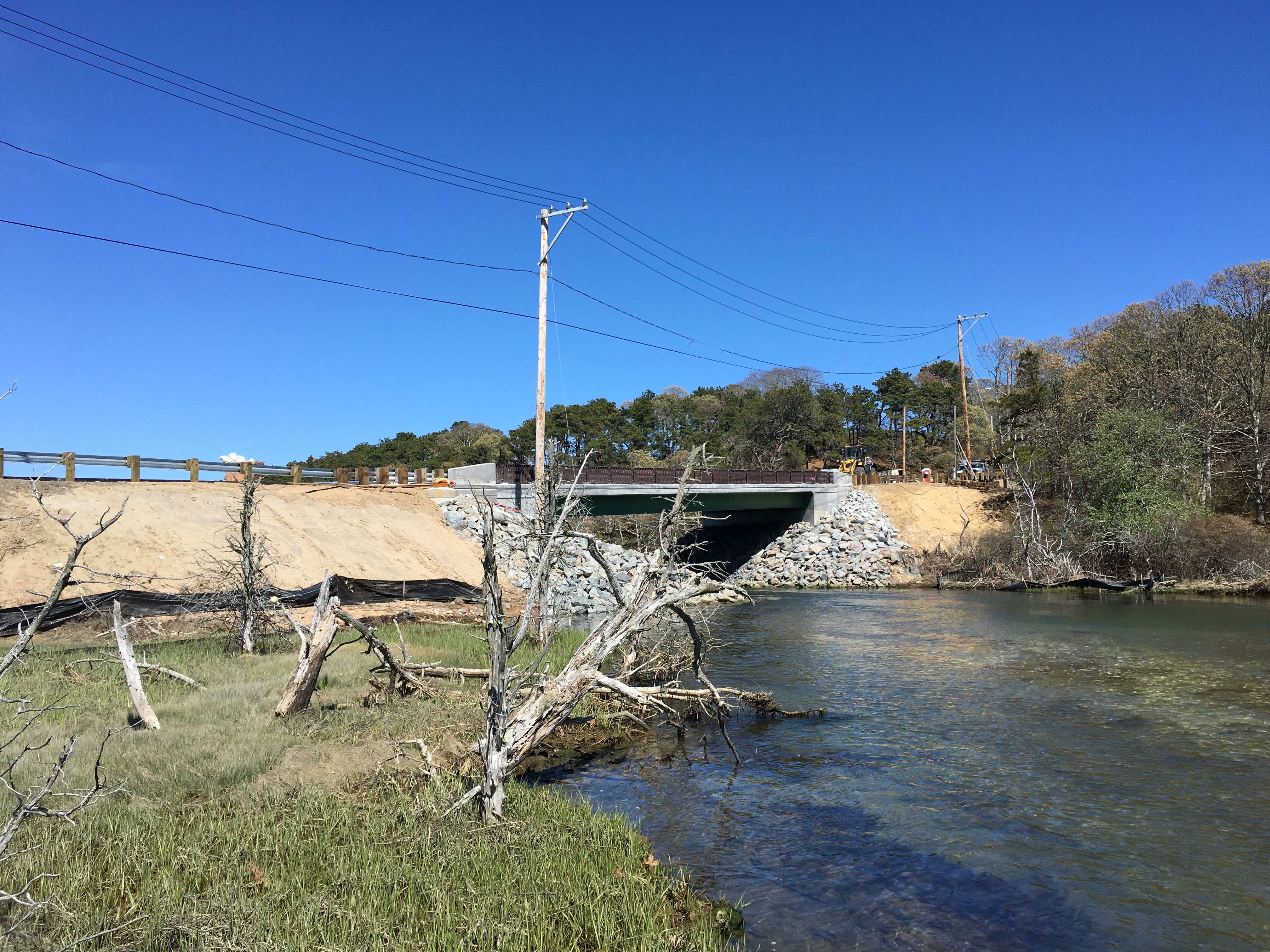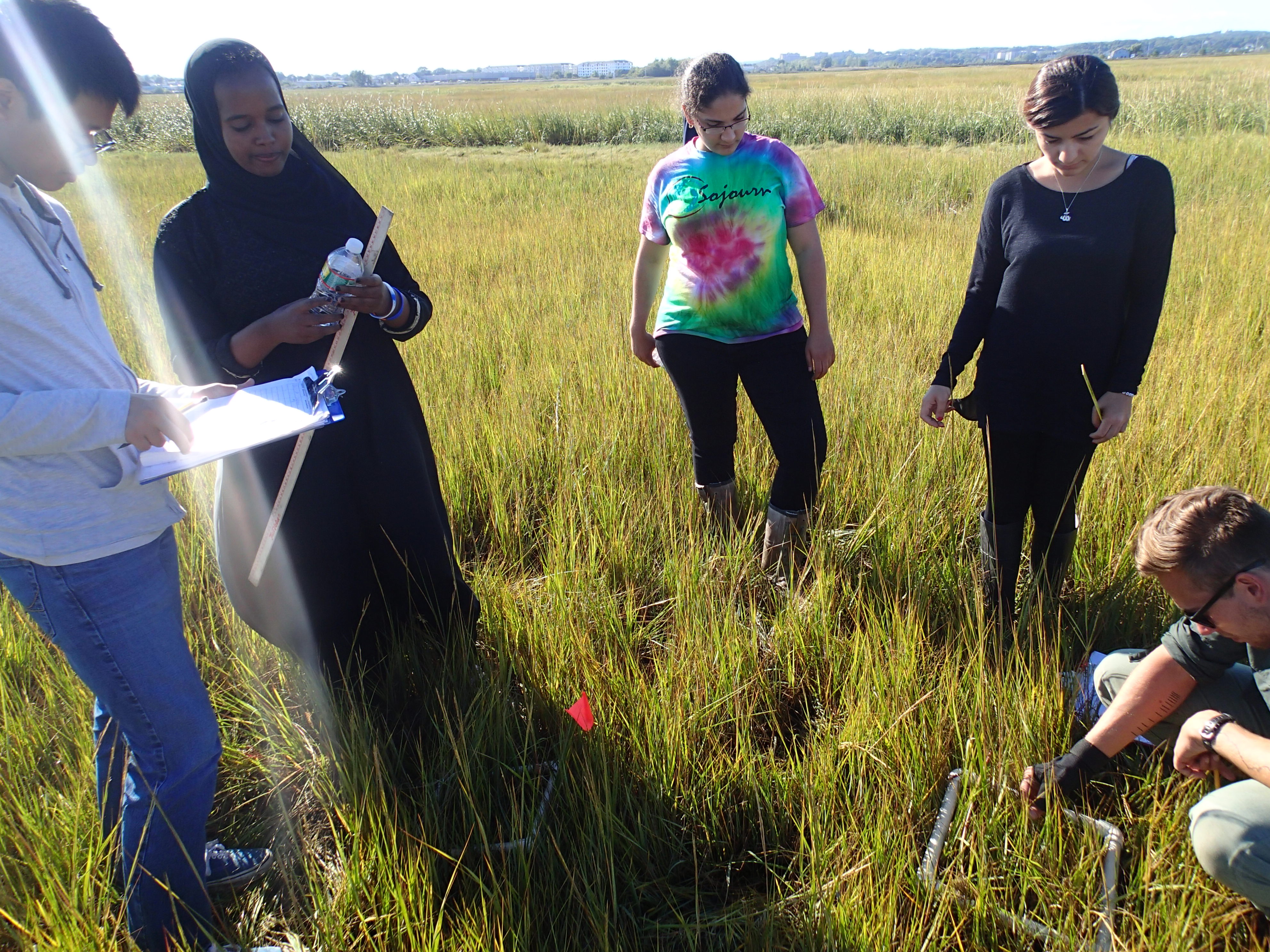Salt Marsh Restoration
 |
| Muddy Creek Marsh: The new and improved spanning bridge which replaced a culvert. |
Coastal wetlands have long been recognized for their ecosystem services. They are nursery grounds for commercially important fish and shellfish as well as habitat/refuge for a variety of coastal organisms. Furthermore, they are sites of large amounts of carbon sequestration and nutrient removal. Salt marshes act as a buffer between the land and the sea, providing protection from storm surges as well as preventing nutrients and pollutants from reaching the open ocean. Recently the role of salt marshes in combating global climate change has gained prominence because of salt marshes’ very high rates of carbon sequestration and capacity to remove fixed nitrogen. The US Water Control Act of 1972 set forth the protection and restoration of economically and naturally important wetlands. The continued loss and degradation of coastal ecosystems, however, has led to an increased desire to include salt marsh restorations as tradable features in carbon offset programs. We have the opportunity to investigate a marsh that is being restored to determine real-time influence of restoration on a variety of factors. Our research will examine how the restoration of full salinity to a degraded oligohaline marsh alters the microbial community structure in marsh sediments paired with their ability to remove bioavailable nitrogen in a process called denitrification.
Our marsh of interest, Muddy Creek, is situated between the towns of Chatham and Harwich, MA on Cape Cod. Up until the fall of 2015, this marsh received low salinity from incoming tides due to a culvert that blocked a majority of tidal flow. The restoration effort involved digging out the culvert and placing a spanning bridge over the creek which restored tidal flushing around February 25, 2016 with the official completion just in time for the surge of traffic for Memorial Day weekend. Our goal in Muddy Creek is to monitor changes in hydrology, geochemistry, and microbial ecology before and after the completion of the restoration as well as a comparison with three reference marshes in the area.
 |
| Chris Lynum showing a group of first year students how to take plant cover data |
In addition to the salt marshes on Cape Cod we have active research focusing on several marshes in the Greater Boston area that integrates teaching and research in a First Year Gateway Seminar course. The Boston-area marshes range in their restoration status with marshes restored 10 and 3 years ago with another marsh restored the Fall of 2015. Students begin in the fall semester with a study of the ecology of the marshes where they learn about above and below ground biomass, species composition, and allometric relationships that will prepare them for field work. They then have the opportunity to conduct hands-on field work and collect samples for analysis of microbial communities in the sediments; following steps for DNA extraction, gel electrophoresis, PCR amplification and cleanup, sequencing, and bioinformatics.